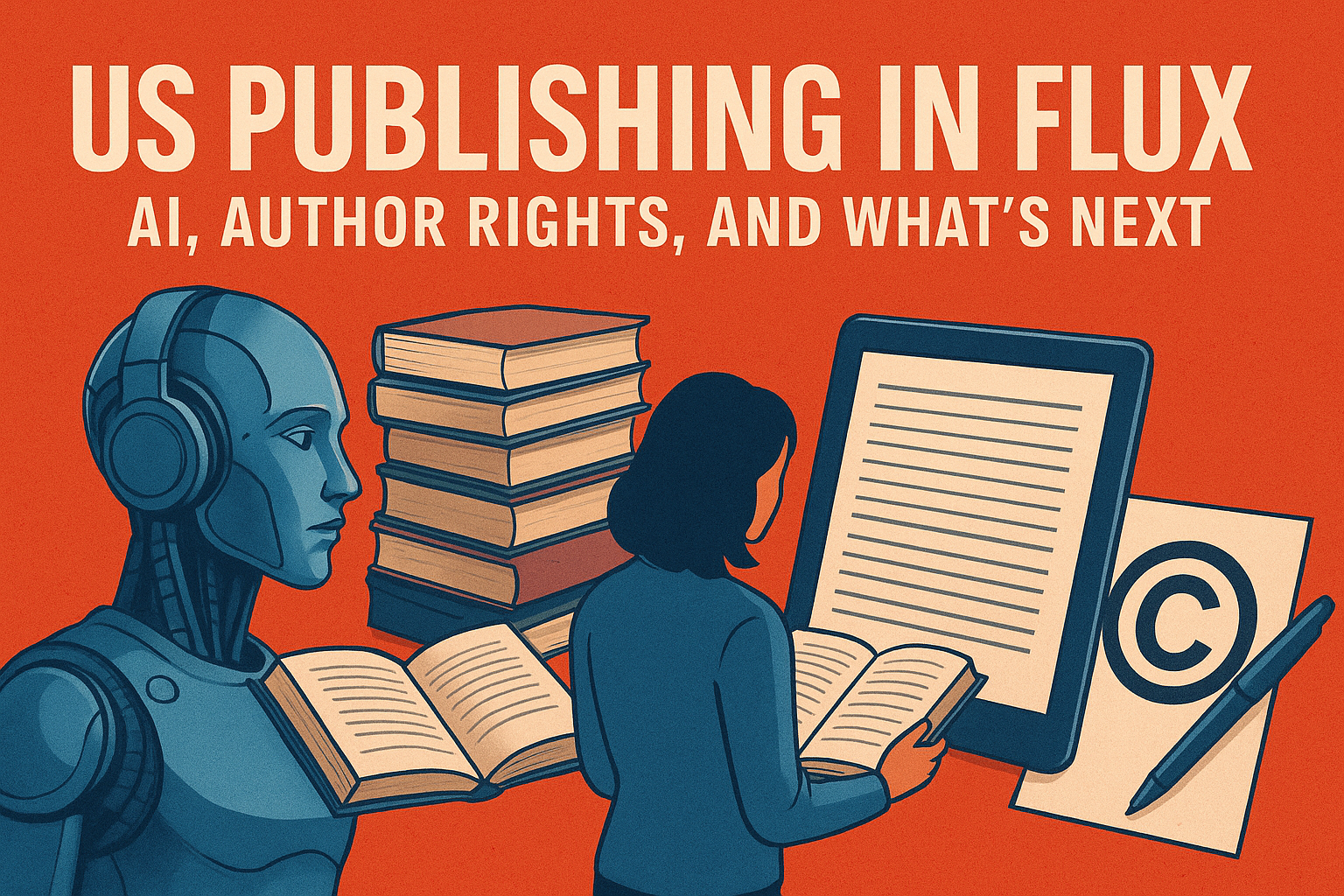10 Techniques for Writing a Compelling Book Hook

Writing a great book and successfully selling it relies a great deal on having a clear idea of who your readers are and knowing how to reach them. But once you reach them, how do you capture your readers’ attention and make them keep on reading? That’s where a great, compelling book hook comes in. Your book hook is essentially your elevator pitch to your readers. That means you will need to make a great impact on your reader in the shortest time possible to ensure they feel curious enough to continue reading.
What Is a Hook?
A hook is exactly as the name suggests, literal fishing imagery aside. It is a literary technique employed at the beginning of a story — or any book, for that matter — to pull the reader in and sustain their interest.
The books you love — they have hooks that work. Whether they involve a shocking statement, a life-or-death scenario, or a thought-provoking question, among countless other possibilities, the hooks employed by their authors succeed because they capture the readers’ attention and serve as the perfect starting point for exploration.
You can come up with great hooks using various techniques — that is, the right techniques for your particular style of writing and your genre.
Whether you’re writing fiction (novels, novellas, short stories, flash fiction) or nonfiction (self-help, essays, how-to’s or manuals, biographies, articles, etc.) or poetry, or marketing collaterals, the goal is to make an impact with your first line and/or your first paragraph.
How to Hook Readers In
Choosing the right approach is key to creating a compelling hook. Let’s explore 10 techniques in writing hooks that will genuinely engage your readers:
1. Let your book title do some heavy lifting.
We’ve established that your first line and your first paragraph are your best shots at hooking your readers in; however, you can — and should — pique your readers’ interest even before that with a title that makes them curious. That’s how you get them to the first page, and your first line and first paragraph can do the rest.
Examples of intriguing, interesting, and compelling book titles include the following:
The Catcher in the Rye
The Sound and the Fury
Flowers for Algernon
Mad Girl’s Love Song: Sylvia Plath and Life before Ted
The Subtle Art of Not Giving a Fuck
Blink: The Power of Thinking without Thinking
2. Write a first line that’s impossible to ignore.
How do you pull your readers in with an impossible-to-ignore first line? You can write a first line that’s intriguing, provocative, emotionally compelling, emotionally resonant, intellectually engaging, startling, funny — you get the idea.
To write your own startling first line, consider a character confession, a surprising observation, or maybe pose a provocative or emotionally urgent question. Have fun with it and see what kind of attention-grabbing first line you can come up with.
The longing for a destiny is nowhere stronger than in our romantic life.
— Alain de Botton, On Love
Tyler gets me a job as a waiter, after that Tyler’s pushing a gun in my mouth and saying, the first step to eternal life is you have to die.
— Chuck Palahniuk, Fight Club
However, note that this is an option, not strictly a rule. If it feels right, you can write a perfectly ordinary line whose job is simply to get the story started, provided that you then proceed to hook the reader in with the scenario you set in your first paragraph. Take, for example, the first line/paragraph in Virginia Woolf’s novel Mrs. Dalloway.
Mrs. Dalloway said she would buy the flowers herself.
For Lucy had her work cut out for her. The doors would be taken off their hinges; Rumpelmayer’s men were coming. And then, thought Clarissa Dalloway, what a morning — fresh as if issued to children on a beach.
Or how about the first paragraph in Claire Keegan’s Small Things Like These:
In October there were yellow trees. Then the clocks went back the hour and the long November winds came in and blew, and stripped the trees bare. In the town of New Ross, chimneys threw out smoke which fell away and drifted off in hairy, drawn-out strings before dispersing along the quays, and soon the River Barrow, dark as stout, swelled up with rain.
3. Ask a question.
Asking a question is an effective way of getting a prospective reader to give your book a good look. You can ask a question that resonates with one of your themes or your character’s circumstances, or you can go ahead and pose the main question (or main problem) of your book.
In a novel, it can be your main character’s dilemma, or it can be a question that none of your characters entertain but will be foremost in your readers’ minds as they delve farther into your book. In a nonfiction book, it will be either the question or problem that your readers are either already preoccupied with or the question that instantly resonates with them. Opening your book with a question not only piques your readers’ interest, it can also motivate them to find the answer to the question, and these are often enough to compel them to keep reading.
4. Say something startling.
Making a bold or controversial statement is a sure way to command the attention of your readers. This kind of hook is especially well suited for nonfiction works, like books that tackle subject matters such as environmental issues, global financial crises, the rise of gun violence, and so on.
For fiction, a controversial, bold, even frightening statement will make for a powerful hook. That statement can be part of the narrative or conveyed via a line of dialogue.
With a bold, controversial, or startling statement for hook, you elicit a reaction, and that reaction turns into curiosity. Readers will keep reading to find out how you back up your statement or whether you come to a different conclusion. Or they want to see how your story unfolds — for example, how your characters survive a brutal scenario that you vividly predict with your first line.
5. Pull your readers in with action.
Rather than open with once-upon-a-time scenarios, the main characters’ vital stats, or a technical definition of terms, capture your readers’ attention with an engaging scenario. Often, engaging translates to varying degrees of tension, but you can start with a simple description of action that effectively sets the stage for your story to unfold. The idea is to have your readers “walk in” on something that’s happening, or into a place where something is taking place.
You can even go for imagined action — that is, open your book by inviting your readers straight inside your character’s head. For instance a novel that revolves around the troubled relationship between a mother and a daughter could open with the daughter agonizing over an impending visit to her mother from whom she is estranged. You can start with her imagining all the things that can go wrong. Of course, the impending event needs to be a major plot point in your story.
6. Establish an emotional connection.
Emotional connection is one of the most important aspects of a reader’s experience, especially with fiction and creative nonfiction. So it makes perfect sense to get your readers emotionally invested in your story right from the start. If opening your book with an action-focused scene is out of the question, you can’t go wrong with an emotional hook.
In the novel The Woman Who Waited, author Andrei Makine opens with a sentence his narrator has written to describe Vera, the titular character:
She is a woman so intensely destined for happiness (if only purely physical happiness, mere bodily well-being), and yet he has chosen, almost, it seems, solitude, loyalty to an absent one, a refusal to love.
In this novel, the first sentence/paragraph is an emotional hook, and the title itself is also a hook.
An even better scenario is to get your readers to connect emotionally with a character in an action-oriented hook. Depict a character’s emotional response to the action unfolding, regardless of whether they are part of the action or an observer. The goal is to prompt your readers’ sympathy and/or concern for the character and make them curious about what happens to the character.
7. Start your story at a critical moment.
Any story has a natural beginning, middle, and end. However, that’s not always the order in which you can tell your story, especially when you need to hook your readers in. That’s where medias res comes in. Medias res is the literary practice of beginning a story in the middle of the action and then filling in the details throughout the narrative. Often, this move will tie in nicely with opening your story with action. And if it’s a critical moment for your character/s, then it’s also an emotional moment.
The terror, which would not end for another twenty-eight years — if it ever did end — began, so far as I know or can tell, with a boat made from a sheet of newspaper floating down a gutter swollen with rain.
— Stephen King, It
When choosing a critical moment to use as your hook, keep in mind that you will need to be able to easily pull and follow your narrative threads out of that opening scene — without needing to sacrifice pacing.
Another critical moment from your story that can serve as a great hook is a moment from the ending. If you choose this option, you will end up writing a frame story — a story that begins with the end. With this story structure, you hook readers in because they want to find out why and how something happened, and/or who is responsible for all trouble, danger, crimes, etc. in the story instead of what happens. Again, make sure that the rest of the story unfolds seamlessly from the hook.
8. Establish a strong voice.
An author’s voice is often a major factor in attracting readers. Voice is the product of diction, syntax, tone, and point of view employed together to tell a story. Your author’s voice is often associated with your narrator, especially the third-person narrator. If you’re telling your story through a first-person narrator, this narrator may not necessarily represent your voice; rather, it could be another character who does, or your voice could be a combination of several of your characters together.
As you build your body of work, your voice will become an instantly recognizable characteristic of your books and will become a huge part of your literary identity. Because of that, your voice will be among the top reasons that readers keep returning to your books.
9. Save the long explanatory and descriptive passages for later.
For sure, there are exceptions, but in general, avoid dedicating your first few sentences to descriptions and explanations. You can describe your character’s physical characteristics later — and preferably not all at once. As a matter of fact, you don’t need to describe everything or give definite figures. You can say your character is tall without having to indicate their specific height. The same thing goes for other elements of your story, in particular the setting, especially when it comes to description of place.
10. Use multiple hooks.
Since most books are organized by chapters, and yours most likely will be, it makes perfect sense not to limit your hook to the first line and first paragraph of your book. Open each chapter with a hook and close it with answers or parts of the answer to the questions you introduce in the first line. Doing this can help make your book truly unputdownable.
Sustaining the Hook
Creating a compelling hook involves thinking beyond hooking your readers in. You not only want to grab their attention, you’ll want to hold it throughout the entire book. This means pacing your book in such a way that the readers get some answers to their questions at strategic points in the narrative. The same goes for the main question of your book: be sure to give parts of the answer at reasonable intervals to keep your readers engaged and to sustain your book’s momentum.
If you’re writing a thriller, you should employ this technique: Introduce new questions once you have answered one or two questions within each chapter or section. The questions should become more crucial and more urgent as the story moves toward conclusion, where the answers would be equally crucial to your readers’ reading experience and offer a satisfying payoff.




